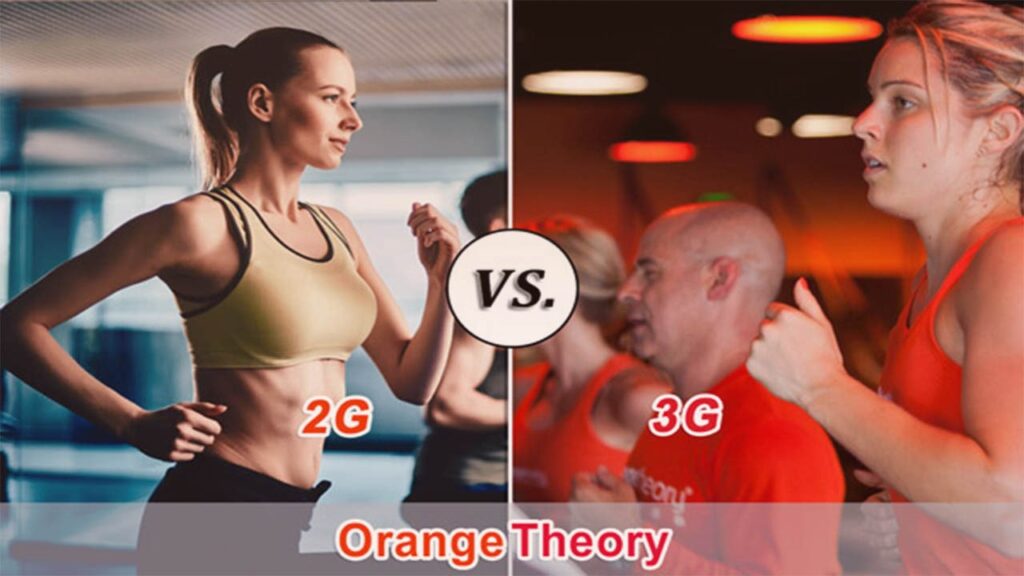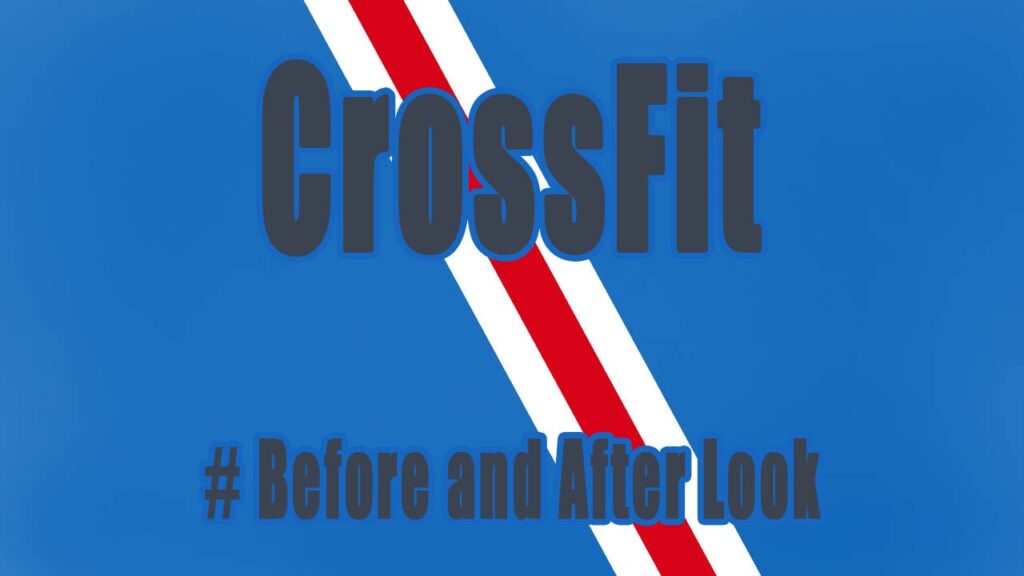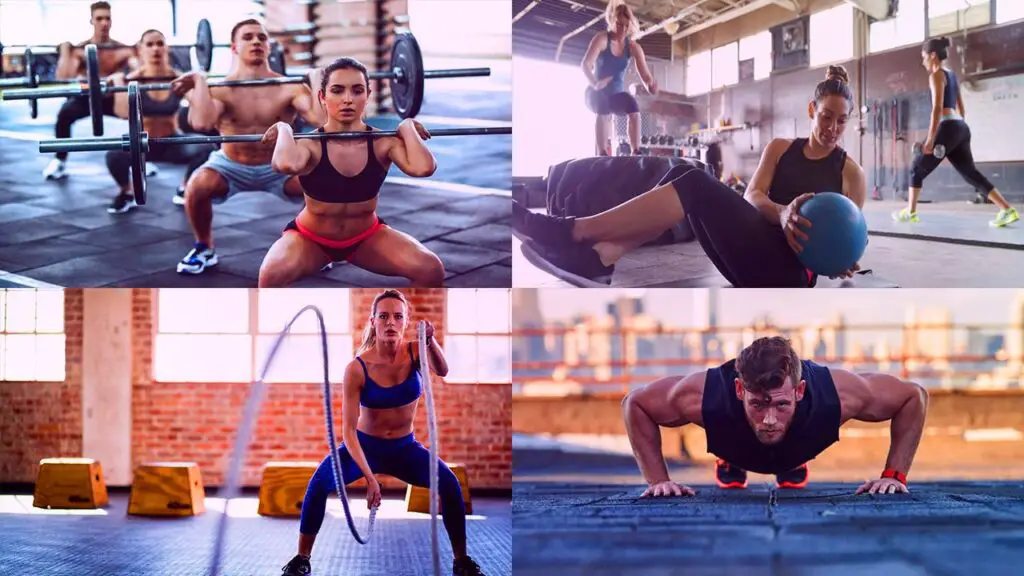Orangetheory Fitness is a popular high-intensity interval training (HIIT) workout that has gained widespread popularity in recent years. The program is designed to boost cardiovascular fitness and burn calories through a combination of cardio and strength training exercises. Orangetheory Fitness classes are known for their unique approach to heart rate monitoring, which divides participants into different training zones based on their heart rate. There are two main class formats in Orangetheory Fitness 2G and 3G. In this article, we will compare and contrast the two formats to help you understand the differences and choose the one that best suits your fitness goals and preferences.

What is Orangetheory Fitness?
Orangetheory Fitness is a popular and innovative fitness program that combines cardio and strength training in a high-intensity interval training (HIIT) format. The workouts are designed to challenge participants and improve their cardiovascular fitness, endurance, and overall strength. The name “Orangetheory” is derived from the concept of reaching the “Orange Zone,” which represents a target heart rate range that is said to optimize calorie burn and metabolic rate.
The program utilizes heart rate monitors worn by participants during the workout. These monitors display real-time heart rate data on screens throughout the studio, allowing participants to track their intensity levels and ensure they are in the target heart rate zones for optimal results. Orangetheory Fitness classes are typically led by certified coaches who guide participants through the exercises and provide motivation to push through the challenging workouts.
Orangetheory Fitness 2G
Overview
Orangetheory Fitness 2G stands for “Two Groups” and is the traditional class format used by most Orangetheory studios. The class consists of two main groups, alternating between cardio and strength training blocks.
Structure
- Cardio Block: During the cardio block, participants use treadmills or rowing machines to elevate their heart rate and work on their endurance. The workouts are designed to challenge participants at their fitness levels, and they can choose between power walking, jogging, or running on the treadmill.
- Strength Training Block: In the strength training block, participants focus on resistance exercises using dumbbells, TRX straps, and other equipment. The goal is to target different muscle groups and build strength and lean muscle mass.
Benefits of Orangetheory Fitness 2G
- Focused Workouts: Participants get dedicated time for cardio and strength training, allowing them to focus on specific fitness goals during each block.
- Simplified Format: The 2G format is straightforward, making it ideal for beginners or those who prefer a more structured workout routine.
- Intense Cardio: The cardio segments in 2G classes can be highly challenging, making them effective for improving cardiovascular fitness and burning calories.
Orangetheory Fitness 3G
Overview
Orangetheory Fitness 3G stands for “Three Groups” and is a class format designed to accommodate more participants in each session.
Structure
- Cardio Block: Similar to the 2G format, the cardio block remains a key component of the 3G class. Participants rotate between treadmills, rowing machines, and a new addition – the stationary bike.
- Rowing Block: In the rowing block, participants focus solely on rowing machines to get a full-body workout that emphasizes cardiovascular endurance and strength.
- Strength Training Block: The strength training block in the 3G format is similar to the one in 2G, with participants using dumbbells and other equipment to perform various strength exercises.
Benefits of Orangetheory Fitness 3G
- Variety: The 3G format offers more variety by incorporating rowing machines and stationary bikes, making it appealing to those who enjoy different types of exercises.
- High Energy: With more participants in the class, the energy level tends to be higher, which can be motivating for some individuals.
- Group Dynamic: The 3G format fosters a strong sense of camaraderie among participants as they work together through different stations.
Differences Between Orangetheory 2G vs 3G
Orangetheory Fitness 2G
- Cardio Block
During the cardio block, participants use treadmills or rowing machines to elevate their heart rate and work on their endurance. They have the freedom to choose between power walking, jogging, or running on the treadmill.
- Strength Training Block
In the strength training block, participants focus on resistance exercises using dumbbells, TRX straps, and other equipment. The goal is to target different muscle groups and build strength and lean muscle mass.
Orangetheory Fitness 3G
- Cardio Block
Similar to the 2G format, the cardio block remains a key component of the 3G class. Participants rotate between treadmills, rowing machines, and a new addition – the stationary bike.
- Rowing Block
In the rowing block, participants focus solely on rowing machines to get a full-body workout that emphasizes cardiovascular endurance and strength.
- Strength Training Block
The strength training block in the 3G format is similar to the one in 2G, with participants using dumbbells and other equipment to perform various strength exercises.
Similarities Between Orangetheory 2G vs 3G
While Orangetheory Fitness 2G and 3G have their differences, they also share several common elements:
HIIT Workouts:
Both formats follow the high-intensity interval training approach, combining bursts of intense exercise with periods of rest or lower-intensity activity.
Heart Rate Monitoring:
Both 2G and 3G classes utilize heart rate monitors to track participants’ heart rate zones, allowing them to maximize their calorie burn and fitness gains.
Certified Coaches:
In both formats, certified coaches lead the classes, providing guidance, motivation, and adjustments to ensure participants perform exercises safely and effectively.
Group Dynamic:
Both 2G and 3G formats foster a group dynamic, encouraging participants to support and motivate each other throughout the workout.
FAQ About Orangetheory 2G vs 3G
Which format is better for beginners?
Both formats can accommodate beginners, but some beginners may find the 2G format more approachable due to its simpler structure and focus on two main workout blocks.
Which format is more intense?
The intensity of the workout depends on individual effort, but the 3G format may feel more intense to some participants due to the inclusion of additional exercises and equipment.
Can I switch between 2G and 3G classes?
Yes, most Orangetheory studios allow members to participate in 2G and 3G classes based on their preferences and availability.
Are the workouts in 2G and 3G equally effective?
Both formats can deliver effective workouts when performed with dedication and effort. The effectiveness of each format ultimately depends on an individual’s fitness goals and commitment to the program.
How do I determine which format is right for me?
Consider your fitness goals, exercise preferences, and class availability. If you prefer a more structured and traditional approach, 2G might be the better choice. If you enjoy variety and a high-energy atmosphere, 3G could be more suitable.
Conclusion
Whether you choose Orangetheory Fitness 2G or 3G, both class formats offer effective and intense workouts that can help you achieve your fitness goals. Consider your preferences for class size, exercise variety, and structure when deciding between the two options. Ultimately, the best format is the one that keeps you motivated and consistently attending classes, leading to improved fitness and overall well-being.



